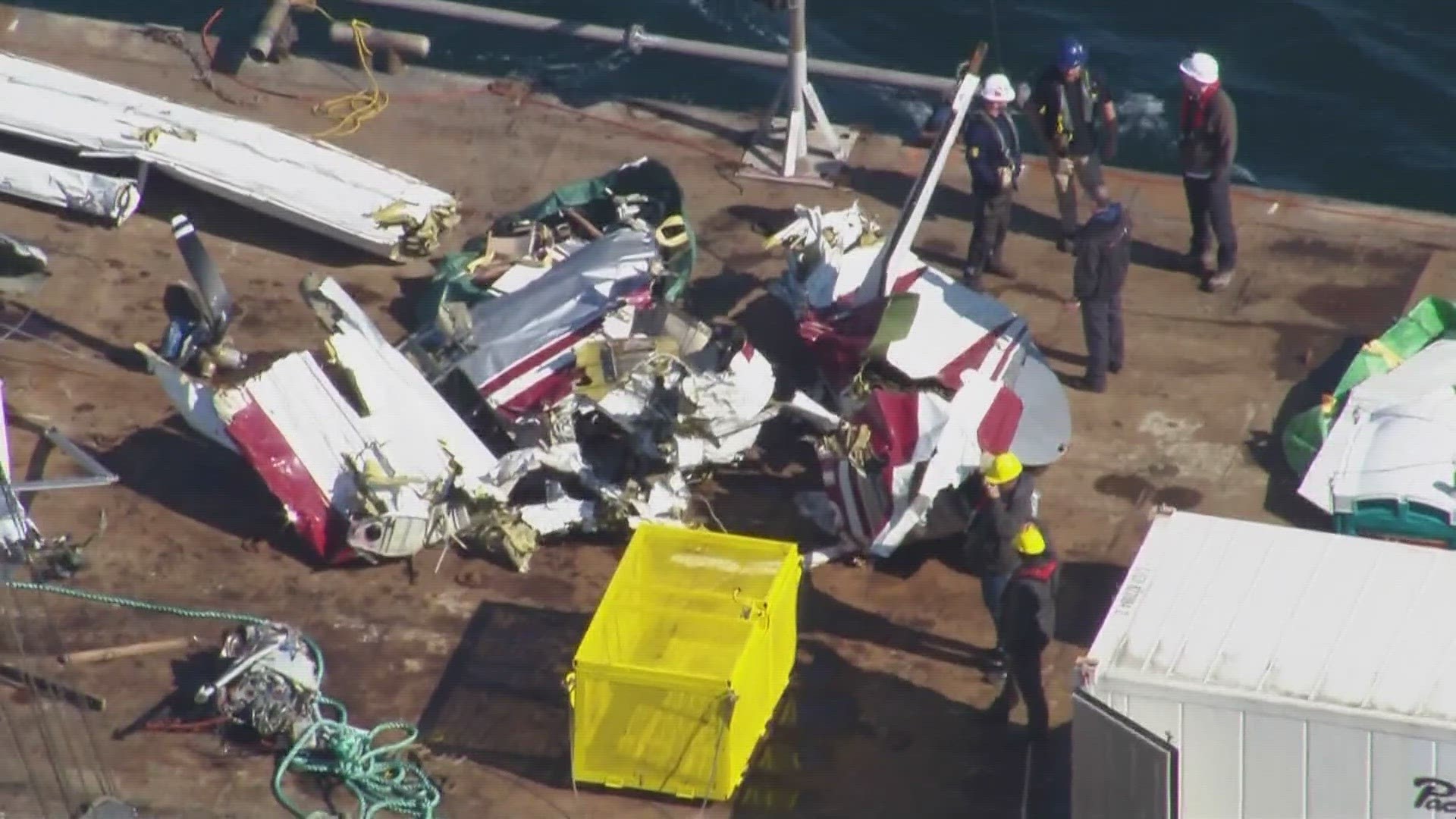ISLAND COUNTY, Wash. — The National Transportation Safety Board (NTSB) released its final report on the deadly floatplane crash that killed 10 people near Whidbey Island last year.
The 59-page report includes the probable cause for the crash and its recommendations to prevent crashes in the future.
The report includes records, reports, and witness statements that were a part of the 500-page public docket that was released in September.
"This has been a tremendous effort and a very exhaustively reported and researched project by the NTSB," said Aviation Analyst John Nance.
On Sept. 4, 2022, a floatplane heading to the Renton Municipal Airport from Friday Harbor crashed into Munity Bay, killing all 10 people on board.
What the NTSB found
NTSB discovered that a lock ring that helps an aircraft control its pitch was not located when officials examined wreckage from the crashed floatplane, which led to the pilot's loss of control in the air.
The NTSB said it determined the probable cause of the crash was the in-flight unthreading of a clamp nut from the plane's horizontal stabilizer due to the missing lock ring.
The NTSB also discovered that maintenance personnel installed a moisture seal on the lock ring assembly to protect against environmental elements. The report said the moisture seal, which is not approved by the floatplane's manufacturer, has the potential to "create interference" in the absence of the lock ring.
It also found maintenance documents and guidance for the horizontal stabilizer trim actuator could lead to errors concerning lock ring installation, although that was found not to be a cause of the crash.
The NTSB recovered videos, captured by home surveillance systems, showing the floatplane flying before taking a nosedive and crashing into the water.
In the NTSB's preliminary report released last year, witnesses said the plane took a nosedive, “spinning,” “rotating,” or “spiraling” before crashing and disappearing below the surface of the water in Mutiny Bay.
"Something happened along the way here and that something led to the loss of this airplane, there's nothing the crew could do," said Nance.
An airplane performance study outlines the 18-minute flight path after the plane left Friday Harbor. Data provided by the Federal Aviation Administration shows the flight was uneventful until the final eight seconds when the plane abruptly pitched up and then down, corroborating witness statements saying it was like a plane fell out of the sky.
"One of the reasons the NTSB put this much effort into this report was because one of the questions always is, how do we make sure this never happens again? This was something that could have been prevented by all the details of why and how is wrapped up into how this part was put together and how it was maintained," said Nance.
What the NTSB recommended
The NTSB issued an "urgent aviation safety recommendation" for the type of plane, a de Havilland DHC-3 Turbine Otter seaplane, seven weeks into the investigation. It recommended that all operators of the plane be required to conduct an immediate one-time investigation of the horizontal stabilizer and lock ring.
The Federal Aviation Administration issued an Airworthiness Directive on Nov. 2, 2022, on the NTSB's recommendation. The directive also required operators to apply a torque seal to the lock.
The NTSB also recommended Viking Air, the plane's manufacturer, to develop inspection criteria for maintenance personnel to determine whether the horizontal stabilizer and lock ring are airworthy or need replacing.
Who were the victims
A total of 10 people, including the pilot, were killed when the plane crashed.
The bodies of Jason Winters, the plane's pilot, Sandra Williams, Ross Mickel, Luke Ludwig and Rebecca Ludwig were recovered during the NTSB recovery operation in November. Gabrielle Hanna's and Patricia Hicks’ bodies were found in September. The bodies of Lauren Hilty, Remy Mickel and Joanne Mera were not recovered.
Representatives for the passengers killed filed lawsuits in August against several companies involved in the plane's production and operation. The family of the plane's pilot filed a lawsuit in September.
Companies in the lawsuits include Viking Air Limited, De Havilland Aircraft of Canada Limited, Longview Aviation Capital Corporation, Northwest Seaplanes, Inc., and West Isle Air, Inc.

